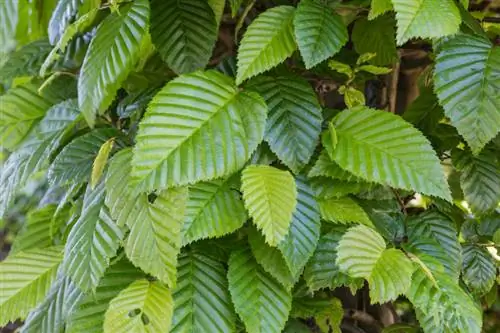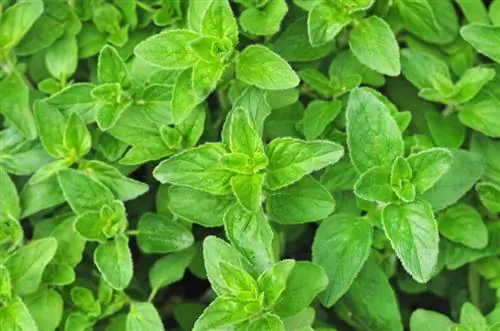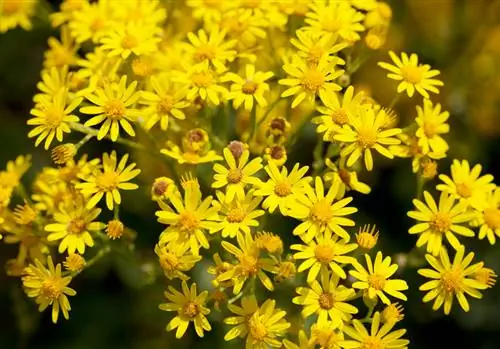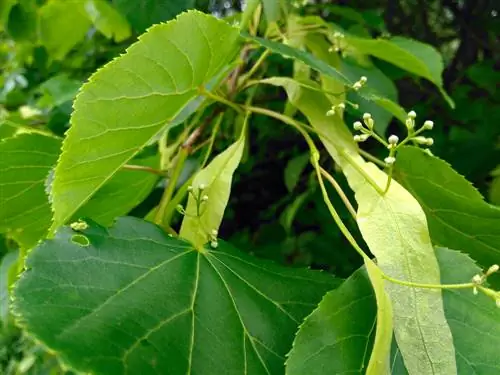- Author admin [email protected].
- Public 2023-12-16 16:46.
- Last modified 2025-01-23 11:20.
The leaf of the hornbeam is similar to that of the common beech, although it comes from a different plant family. However, there are a few small differences that will help you determine whether you are looking at a hornbeam or a common beech.

What does a hornbeam leaf look like?
The hornbeam leaf is 4-10 cm long, 2-4 cm wide, green and ovoid oval, with a serrated edge. In the fall it turns yellow before turning brown and drying out. Despite the similarity to the common beech, the hornbeam leaf differs in that it shoots later and is less shiny.
This is how the hornbeam leaf is structured
- Length: 4 to 10 cm
- Width: 2 to 4 cm
- Color: green, yellow in autumn
- Shape: egg-shaped oval
- Special feature: sawn leaf edge
Difference to the leaves of the common beech
The leaves of the common beech are also green, unless it is the special form of copper beech with red leaves. The leaf shape of both trees is so similar that they are often confused.
The difference is that the leaves of the common beech sprout earlier than those of the hornbeam. The leaf of the hornbeam is not quite as shiny.
The structure of hornbeam leaves appears a little coarser and the leaf feels “older”. The foliage of the hornbeam turns bright yellow in autumn, while the leaves of the common beech take on an orange-red color.
Different colors throughout the year
Hornbeams offer a different sight every season, regardless of the budding and the respective pruning.
The leaf color changes throughout the year. When it sprouts, the leaves are a delicate light green and have a slight hairiness. In summer it turns a bright green.
In autumn the hornbeam leaves turn yellow. They then dry out and hang brown in the tree until spring.
The hornbeam leaf stays on the tree for a long time
One special feature makes the hornbeam a popular hedge plant. The leaves stay on the tree for a very long time. Although they look brown and dried out, they still provide a good privacy screen.
Many garden beneficial insects overwinter in the dried leaves. This fact also makes the hornbeam a valuable garden plant.
The last brown leaves only fall off when the hornbeam sprouts again in early spring. Shiny brown new shoots then appear on which the delicate green fresh leaves grow.
Brown leaves on hornbeams
The fact that the leaves of the hornbeam turn brown and dry out in winter is a normal process because the hornbeam is not an evergreen tree.
If the hornbeam turns brown beforehand, fungal diseases may be responsible.
Hornbeams can tolerate dry spells and even flooding for a short period of time. But if the tree is too wet or dry for too long, the leaves also turn brown and dry out prematurely.
Tip
The fruit of the hornbeam, a nut, is also surrounded by a leaf. The cotyledon initially encloses the fruit and supplies it with nutrients. In autumn the leaf opens and serves as a propeller with which the nut is blown to a location far away from the tree.






